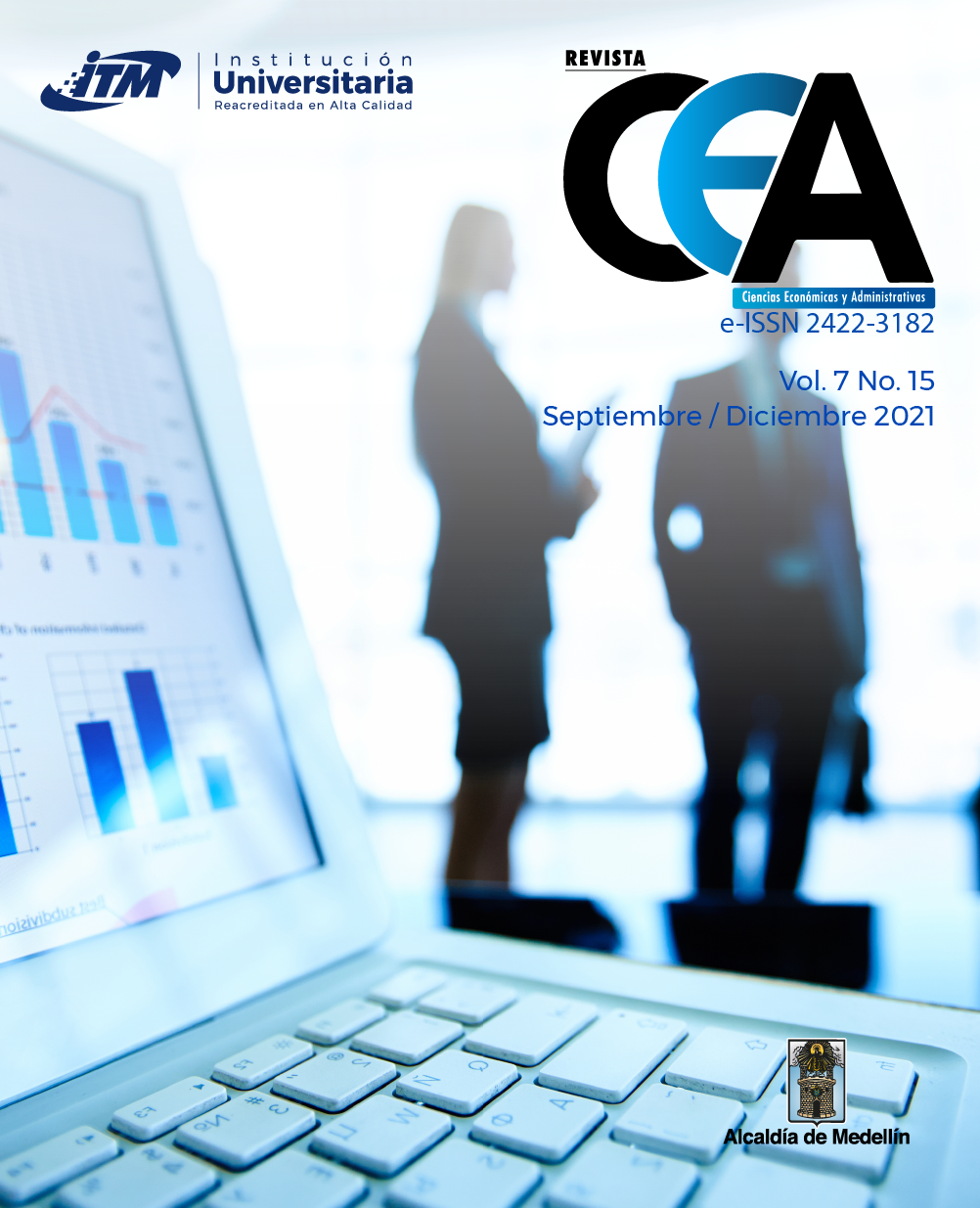Islamic Paradigm of Money: Interconnected Dimensions
Abstract
In Islam, money is viewed as a means to measure value and a tool for transactions. This study explains other dimensions of money while also examining its use in the interconnected social and religious phases of human life. Since money is perceived differently across cultures, we conducted a literature review to identify dimensions other than the one considered by Western culture. For this purpose, we used scientific articles, book chapters, and books as the primary sources, which allowed us to obtain a complete and coherent description of the phenomenon under study. According to the results, money not only has a transactional dimension that seeks to maximize profit (as it is mainly conceived by Western culture) but also a social and religious dimension. Giving money can be more satisfying than giving in-kind. In Islam, the money collected is freely spent based on individual needs. In addition, money (dinar and dirham) serves to measure pious deeds when employed as a unit of account in zakat and qurban, as well as in inheritances. In Islam, a proper management of monetary assets can help to link the social and religious dimensions in a coherent manner.
References
Abdullah, M. A. (2018). Islamic Economics: Principles & Analysis. International Shari'ah Research Academy for Islamic FInance (ISRA).
Abdullah, M. A. (2020). The Intersubjective Type of Religiosity: Theoretical Framework and Methodological Construction for Developing Human Sciences in a Progressive Muslim Perspective. Al-Jāmi‘ah: Journal of Islamic Studies, v. 58, n. 1, 63-102. https://doi.org/10.14421/ajis.2020.581.63-102
Adkins, L. (2015). What Can Money Do? Feminist Theory in Austere Times. Feminist Review, v. 109, n. 1, 31-48. https://doi.org/10.1057/fr.2014.37
Askari, H., Iqbal, Z., Mirakhor, A. (2014). Introduction to Islamic Economics. Theory and Aplication. John Wiley & Sons Singapore Pte. Ltd.
Balaid, A., Abd Rozan, M. Z., Hikmi, S. N., Memon, J. (2016). Knowledge Maps: A Systematic Literature Review and Directions for Future Research. International Journal of Information Management, v. 36, n. 3, 451-475. https://doi.org/10.1016/j.ijinfomgt.2016.02.005
Bin Hasan, Z. (2016). From Legalism to Value-Oriented Islamic Finance Practices. Humanomics, v. 32, n. 4, 437-458. https://doi.org/10.1108/H-07-2016-0051
Brollo, T. (2021). Money in the debt relationship: notes on the medieval conceptualisation of money in Accursius and Bartolus of Sassoferrato. The European Journal of the History of Economic Thought, 1-24. https://doi.org/10.1080/09672567.2021.1893776
Choudhury, M. (2018). Comparative Islamic Perspectives in Money, Monetary Policy, and Social Wellbeing. Journal of Economic Cooperation & Development, v. 39, n. 1, 143-162. https://www.proquest.com/docview/2058600589
Czerny, M. (2019). The influence of religious principles on the formation of the accounting system. Annales. Etyka W Życiu Gospodarczym, v. 21, n. 8, 31-45. https://doi.org/10.18778/1899-2226.21.8.03
Daly, S., Frikha, M. (2016). Islamic finance: Basic principles and contributions in financing economic. Journal of the Knowledge Economy, v. 7, n. 2, 496-512. https://doi.org/10.1007/s13132-014-0222-7
Durani, F., Qureshi, I. (2016). A Historical Analysis of the Theories of Money. International Journal of Business and Economic Development, v. 4, n. 1, 71-84. https://ijbed.org/cdn/article_file/i-10_c-106.pdf
Durdu, A. (2018). Ortaçağ Türk-İslam Devletlerinde Kalpazanlık Faaliyetleri. Bilimname, v. 2018, n. 36, 527-554. https://doi.org/10.28949/bilimname.454770
Ebrahimi, M., Yusoff, K. (2017). Islamic Identity, Ethical Principles and Human Values. European Journal of Multidisciplinary Studies, v. 2, n. 6, 325-336. https://doi.org/10.26417/ejms.v6i1.p325-336
Fatihudin, D. (2015). Metode Penelitian: Untuk Ilmu Ekonomi, Manajemen, dan Akuntansi. Zifatama Publisher.
Fink, A. (2010). Conducting Research Literature Reviews: From the Internet to Paper (3rd Ed.). SAGE, Thousand Oaks.
Husi, S. (2019). Money and Morality: A Matter of Misinterpretation. The Independent Review, v. 23, n. 4, 589-614. https://www.jstor.org/stable/45129571
Ikeda, K., Hamid, M. N. (2018). Applications of blockchain in the financial sector and a peer-to-peer global barter web. Advances in Computers, v. 111, 99-120. https://doi.org/10.1016/bs.adcom.2018.03.008
Jaffar, S., Abdullah, A., Meera, A. K. M. (2017). Fiat Money: From the Current Islamic Finance Scholars' Perspective. Humanomics, v. 3, n. 3, 274-299. https://doi.org/10.1108/H-01-2017-0013
Manchanda, R., Manchiraju, S., Abidi, S., Kumar Mishra, J. (2015). A Study of Interaction of Materialism and Money Attitude and Its Impact on Car Purchase. Management & Marketing, v. 10, n. 3, 245-269. https://www.researchgate.net/publication/284180484_A_study_of_interaction_of_materialism_and_money_attitude_and_its_impact_on_car_purchase
Manzilati, A., Wildana, M. D. (2019). Zakat 2.0. UB Press.
Okoli, C. (2015). A Guide to Conducting a Standalone Systematic Literature Review. Communications of the Association for Information Systems, v. 37, 879-910. https://doi.org/10.17705/1CAIS.03743
Omer, S. (2015). Mosque Decoration Between Acceptance and Rejection. Islamic Studies, v. 54, n. 1/2, 5-38. https://www.jstor.org/stable/44629922
Portnoy, M. (2018). Criptocurrency and Money–The Way of Interaction. Mirovaia ekonomika i mezhdunarodnye otnosheniya, v. 62, n. 10, 64-70. https://doi.org/10.20542/0131-2227-2018-62-10-64-70
Prastowo, A. (2016). Memahami Metode-Metode Penelitian. Ar-Ruzz Media.
Qardhawi, Y. (2011). Fiqh al-Zakah. Islamic Book Trust.
Rahman, S. (2015). Zakat on Retirement and Pension Plans. International Journal of Islamic and Middle Eastern Finance and Management, v. 8, n. 3, 274-290. https://doi.org/10.1108/IMEFM-09-2014-0089
Rowe, F. (2014). What Literature Review is not: Diversity, Boundaries and Recommendations. European Journal of Information Systems, v. 23, n. 3, 241-255. https://doi.org/10.1057/ejis.2014.7
Santoso, B., Meera Mydin, A. K., Ahmad, K. (2017). Is Gold Dinar the Appropriate Money in Islam? Journal of Islamic Finance (Special Issue), v. 6, 73-90. https://journals.iium.edu.my/iiibf-journal/index.php/jif/article/view/257
Seitz, E. (2017). What is Money? A Definition Beyond Materiality and Quantity. Social Analysis: The International Journal of Anthropology, v. 61, n. 4, 114-129. https://www.jstor.org/stable/26593225
Setyosari, P. (2013). Metode Penelitian Pendidikan dan pengembangan. Prenadamedia Group.
Siddique, M. Z. (2020). Modern money and Islamic banking in the light of Islamic law of riba. International Journal of Finance & Economics. https://onlinelibrary.wiley.com/doi/pdf/10.1002/ijfe.2196
Sifat, I. M., Mohamad, A. (2018). From metal to paper: validating paper money from Islamic perspective. International Journal of Ethics and Systems, v. 34, n. 1, 2-19. https://doi.org/10.1108/IJOES-06-2017-0090
Sumaedi, S., Juniarti, R. P., Bakti, I. G. M. (2015). Understanding Trust & Commitment of Individual Saving Customers in Islamic Banking. Journal of Islamic Marketing, v. 6, n. 3, 406-428. https://doi.org/10.1108/JIMA-06-2013-0045
Syarbini, A. (2012). Supersedekah. QultumMedia.
Urick, M. (2012). Exploring Generational Identity: A Multiparadigm Approach. Journal of Business Diversity, v. 12, n. 3, 103-115. http://t.www.na-businesspress.com/JBD/UrickMJ_Web12_3_.pdf
Vojvodić Balaž, V. (2019). Monetary Symbolism: Art as a Deposit of Value. AM Journal of Art and Media Studies, n. 20, 137-147. https://doi.org/10.25038/am.v0i20.333
Wlodarczyk, J. (2014). NonNeutrality of Money in a Social Perspective. Economics & Sociology, v. 7, n. 2, 199-208. https://doi.org/10.14254/2071-789X.2014/7-2/16








